Review: Kyocera Hydro Vibe for Sprint
May 20, 2014, 3:15 PM by Eric M. Zeman
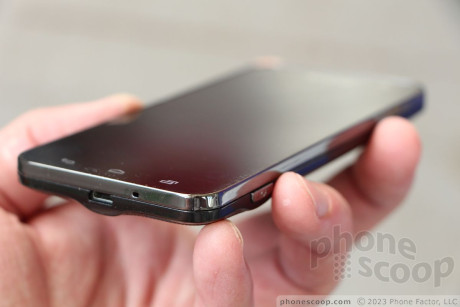
Kyocera is back with another waterproof, entry-level Android smartphone for Sprint's network. The Vibe offers a good mix of features and performance for the price.
Form
Is It Your Type?
Kyocera has carved a nice niche for itself by placing a priority on waterproofing devices. The Hydro Vibe is a budget-minded Android smartphone that can survive a dunk in the drink. Whether you have butter fingers or spend a lot of time near the water, the Hydro Vibe is worth considering.
Body
The Hydro Vibe is the latest in Kyocera's line of water-resistant devices - a feature Kyocera decided is worth using to differentiate its products from the competition. The Vibe is not ruggedized to protect against drops, but it can handle a short bath with no problem.
The Vibe is fairly compact and somewhat conservative. It's shorter than the HTC One mini 2, for example, but wider and thicker than an iPhone 5s. The Vibe is a black slab with few distinctive design elements. The lines are straight and simple. The Vibe is made of plastic and glass. The front face is black, and I'd call the back surface a dark, dark gray. The buttons are chrome-colored. In all, the Vibe wears typical trade dress for a Kyocera handset.
As is common with Kyocera handsets, the materials are good, but not of the highest quality. The glossy glass front surface feels fine under the thumb, but the textured battery cover befits the device's low price point. The assembly of the device is quite good. It feels tight and strong in the hand. Nothing about the Vibe is loose, and seams are fitted together perfectly. The size and weight are quite comfortable. It is perhaps a bit thicker (front-to-back) than I'd like it to be, but that doesn't mean you'll have any trouble carrying it around in a pocket.
Glass makes up 99% of the front surface, the rest of which is composed of a thin rim circling the screen to provide some protection for the glass. This rim makes for a stark edge between the front and side surfaces. Kyocera's logo and three dedicated capacitive buttons are the only elements that interrupt the otherwise jet-black glass panel. The dedicated buttons (back, home, multitask) work well and offer haptic feedback.
The volume toggle is on the left edge of the phone. It has a reasonably good profile and isn't too hard to find in a hurry. I do wish it were easier to tell apart the two directions, though, as the entire button is only about an inch long. Travel and feedback are decent. The lock button is located on the top edge of the Vibe. It has an excellent profile, but travel and feedback felt a bit mushy to me. The same goes for the dedicated camera button on the right edge of the phone. It is easy to find, but I wish travel and feedback were slightly better.
The Vibe is water resistant. It can sit in 1 meter (a little more than 3 feet) of water for up to 30 minutes. Like more and more devices that offer this feature, the Vibe is free of hatches and plugs. That means there's nothing protecting the microUSB port, which is on the bottom, nor the headphone jack, which is on the top. You don't have to worry about making sure everything is perfectly sealed up (well, except for the battery cover). That's good, because of course most people drop phones into water on accident, not after careful preparation. I submerged the Vibe in several common household liquids and it rested comfortably in each with no problems. It can also handle blowing rain, sweat, and high humidity. I held it under a running faucet for a bit, pressed it to my sweaty face after mowing the lawn, and let my neighbor's dog lick it. Yeah, it still works just fine.
The battery cover peels off pretty easily, especially considering that the device is water resistant. The gasket that keeps water from entering the battery cavity - and the rest of the phone - is built into the cover, which needs to be pushed firmly into place to form a good seal. The battery is removable. The SIM card and microSD memory cards are built into a stack with the memory card positioned on top of the SIM card. The memory card can be pulled without removing the battery, but it's rather tricky. The SIM card can't be removed unless you first yank out the battery.
Performance
Screen
In order to maintain its compact dimensions, Kyocera gave the Hydro Vibe a 4.5-inch screen with 960 x 540 pixels - or qHD resolution. Kyocera picked this display to help keep the cost of the Vibe down. Larger, higher-resolution screens would also impact battery life and processor performance. It's a decent screen and does well enough for this class of device. It's not the sharpest display ever created and on-screen elements occasionally revealed some pixels along the edges. I found the display to be very bright and I had no trouble using it outdoors as a camera. Colors are accurate, and there's no color shift or brightness drop off when the phone is tilted side-to-side. The Vibe has a nice little display.
Signal
The Vibe performed on par with other devices I've tested on Sprint's network in the metro NYC area. It always held onto at least a little bit of signal. In weak coverage areas the Vibe was able to make phone calls (though it often took more than one try), and couldn't load a web page to save its life (see screenshots). In stronger coverage areas, the Vibe did well in terms of both voice and data performance. LTE speeds were decent for Sprint, but they don't compare to what's available with AT&T, T-Mobile, or Verizon's networks.
Sound
The Vibe uses Kyocera's Smart Sonic Receiver technology. You'll notice the Vibe doesn't have a traditional earpiece speaker at all. The technology eliminates the need for a speaker and instead uses vibrations to transmit sounds directly to the eardrum. Placing the phone in contact with the general area of the ear is supposed to create clear sound even in very noisy environments. This tech works automatically; you don't have to do anything to enable it. If you're wearing a helmet, just press the Vibe against the helmet and you should be able to hear calls.
In the Vibe's case, I struggled a bit to hear calls in my quiet office even when the volume was set all the way up. I found if I pressed the phone very hard against my head - almost to the point of causing pain - I could hear better. Paradoxically, the Vibe was easier to hear in noisy environments. I didn't have any trouble maintaining a conversation in a noisy car, for example (don't worry, I wasn't driving). I also tested the Vibe when wearing a helmet. It's amazing just how well it works through plastic. Quality of these calls was average.
You can also choose to pass calls to the speakerphone, which is a traditional speaker placed on the back of the phone. The quality of calls sent to the speakerphone were average at best, and sometimes below average. The quality was scratchy at times, and the volume just barely adequate when set all the way up. I found the ringers and alerts were decent for most environments. The vibrate alert produces a good buzz.
Battery
The Vibe delivered much better battery life than some of Kyocera's other Android smartphones. I easily managed to get a full day's use with moderate email, social network, browsing, and media consumption. The Vibe includes Kyocera's MaxiMZR and Eco Mode tools to help you further improve battery life; they do help.
MaxiMZR analyzes the data usage and can limit the background data consumption of certain apps (such as email or Facebook) to help conserve power. The tool takes at least a few days to learn how you use your apps. Eco Mode helps refine the Vibe's power consumption by shutting down predetermined services once the battery reaches a predetermined percentage. For example, Eco Mode could be used to turn off automatic email fetch once the battery drops below 20%.
Most people shouldn't need these tools to get through a full day.
Basics
Menus
The Vibe runs Android 4.3 Jelly Bean with a thin user interface skin from Kyocera. Most of the basics are unchanged from stock Android and many UI elements are carried over from other Kyocera devices. The Vibe has a number of features and apps seen on other Sprint handsets, as well.
The lock screen offers four shortcuts thanks to a nifty little unlocking tool. A key appears in the center of the screen. Users need to flick it outward to one of four different shortcuts, including the phone, camera, messaging, and home screen. The notification shade is also visible from the lock screen.
The notification shade doesn't include toggles for the radios, but has a shortcut to the main settings menu and of course notifications. I actually like the simpler look of the Vibe's notification shade. The lack of tools and controls means you can actually see your notifications. Some phone makers stuff so many controls into the notification shade that you can barely see any alerts.
The Vibe has five home screen panels out of the box, three of which are packed with shortcuts and widgets. Naturally, users can adjust the home screens however they see fit. The main app menu is a grid of apps that can be viewed as an alphabetical grid or a custom grid. It cannot be viewed as a list. Apps can be placed in folders on the home screen or in the app menu. I like that the app menu has a magic reset button that will automatically resort the apps into alpha order.
The settings tools are stock Android in terms of layout, but are dressed up with icons and colors unique to Kyocera. The settings offer users control over the device's network access, accounts, personalization tools, and so on. One extra feature offered by Kyocera is Starter Mode, which dramatically simplifies the look and functionality of the user interface for new users. Kyocera recommends Starter Mode for first-time Android users, but keep in mind that it loses some of the more interesting features of the OS, such as home screen widgets. Starter Mode is found under the "Home Mode" heading in the settings menu.
The Vibe has a quad-core 1.2 GHz Qualcomm Snapdragon 400 processor. Every phone I've tested with this processor inside performed well, and the Vibe is no exception. I didn't see any lagging or trouble loading apps. The phone was smooth and free of problems. The one thing I did notice is that the Vibe was perhaps a little slower when it came to downloading and installing applications. Otherwise, the Snapdragon 400 provided more than enough oomph to push the Vibe along.
Calls and Contacts
The phone app is mostly unaltered from the stock version. There are tabs across the top offering access to the dialpad, call log, and contacts. The dialpad is nice and big, and the in-call tools are rather neat. The speakerphone, mute function, and Bluetooth radio all have distinct on/off switches that make them easy to decipher and use when in the middle of a call.
The contact app includes its own tabbed home screen, which separates you contaact groups, from your favorites, and from the entire database. Individual contact cards can hold tons of data and sync seamlessly with pretty much any account you care to use. There are several home screen widgets, too, as well as the ability to put direct actions to select contacts on the home screen.
Messaging
The Kyocera Hydro Vibe includes all the same messaging apps found on the Sprint versions of the HTC One and Galaxy S5. Most of the messaging functions are Google's services, such as Gmail, Google+, Hangouts, and so on. All the Google apps work without issue, just like on every other Android device.
Sprint has set the stock Android messaging app as the default for SMS/MMS. Since Google now lets Android device owners pick which app they want to use for SMS, you can ditch the stock app if you want and use the Google+ Hangouts instead. Hangouts combines SMS and instant messaging.
Sprint also included Messaging+, a third-party messaging app that can handle SMS/MMS, as well as Facebook messages and Twitter DMs. It's a little clunky, but may consolidate most your messaging into a single app.
Neither Facebook nor Twitter is pre-installed, so you'll have to download them from the Play Store yourself.
Extras
Media
The Vibe includes the basic Google Play apps, including Music & TV, Video, Books, Newsstand, and Games. You can use the Play Store to purchase or rent content and then consume it in the corresponding app. These apps are fairly mature and haven't changed much in the last year or so. They work just fine. The Vibe lacks basic MP3/video player apps.
The Vibe also includes NextRadio for listening to local FM radio stations. It's a bummer that it requires headphones, though. Sprint loaded the Vibe with CBS Sports, as well as Sprint Music Plus and Sprint TV & Movies. Sprint's Music store is getting better. The latest version offers news as well as the latest hits and the user interface is much improved. It's still a bit slow, however. This was one app that might suffer from the Vibe's Snapdragon 400 processor. Sprint TV & Movies offers a limited selection of live, streamed TV shows. Most of the content revolves around news and sports. If you want more channels and movies, you have to subscribe to the monthly service. Sprint charges $10 per month for access to a better selection of TV and a separate $6 per month to access a limited selection of movies.
Camera
The Vibe offers a new take on the camera software from Kyocera. Previous devices have offered a stock-Android camera experience, but the Vibe follows a different path. I'm glad to see a dedicated camera button on the phone, which makes it easier to launch the camera app. The app fires up in short order.
All the controls for the camera are lumped in the right edge of the screen. The camera includes separate buttons for capturing photos and capturing video. Two buttons may take up more space than one, but it makes it easier to capture snapshots when recording video. There is a strip next to the shutter buttons that contains some basic tools for switching mode and scenes, as well as altering white balance and controlling the flash. The modes include normal, color effect, burst, panorama, smile shutter, and HDR. Scenes include auto, portrait, landscape, night portrait, night landscape, and action. These modes and scenes are all fairly typical and function as expected.
In order to adjust more behaviors, you need to select the full settings menu. This expands another control strip across the bottom of the screen and provides access to resolution/quality controls, as well as autofocus and metering behavior, the timer, blink detection, storage location, review period, and so on. The one thing I don't like is that all these items are represented by a little icon with no text. You have to press them in a trial-by-error fashion to figure out what all the little buttons do. This is frustrating the first few times around, but you can learn them over time.
In all, the camera behaves quite well.
Pictures
The Vibe's 8-megapixel camera exceeded my expectations for this class of device.The shots I captured were generally in focus, showed good exposure, and proper white balance. See how blue the sky is and green the foliage in the shots below. The HDR mode had trouble on occasion, and white balance was sometimes off when indoors, but the bulk of shots looked good. I'd say the Vibe could stand in for a dedicated camera on vacation, but only for those who aren't super picky about their images.
Video
The Vibe can capture 1080p HD video, and the results I achieved looked good. I was pleased with the sharpness of the video, as well as the exposure and color. In general, it will deliver results that accurately represent the real-life subject. The only complaint I'd voice is that there's perhaps a bit more grain than I'd like to see. Most people will be pleased with the results, and not shy about sharing them.
Gallery
The Vibe uses the stock Android gallery application. It doesn't offer anything new or different compared to other Android 4.3 phones. It's acceptable for managing photo albums and sharing photos with social networks. It also has a some simple editing features, such as crop, rotate, red-eye reduction, and filters that help correct color, exposure, and other issues.
The Google Photos+ app is also on board, which ties into Google+. Photos+ is a decent app and is particularly handy when it comes to backing up photos and videos to Google+ for easier management and sharing.
Apps
There are a lot of Sprint-branded apps on board, as well as useless extras. You'll find 1Weather, CBS Sports, Eureka Offers, MagniFont, Sprint Money, as well as My Sprint Music Plus, Sprint TV & Movies, and of course Sprint Zone. Most of these cannot be deleted, but there's still a fair amount of storage left on the Vibe for your own apps and content.
Bluetooth
The Vibe's Bluetooth radio worked well. I was able to connect with an array of other gadgets and pass phone calls and music to mono and stereo headphones. Calls sounded OK through my car's hands-free system. Music also sounded good via Bluetooth (although it lacks aptX support for truly top-quality music.) I had no trouble pushing files between devices, either.
Browser
The Vibe comes with both the generic Android browser and Chrome. The generic browser is "enhanced" with the Lumen Toolbar. Basically, the Lumen Toolbar adds browser extensions that improve the performance of the browser when it comes to content, such as games and videos. It also adds easy sharing tools, newsfeed shortcuts, and recommendations. I didn't find it to be all that helpful, and thankfully you can turn it off. You can also choose to apply Lumen to Chrome if you want.
Both the stock browser and Chrome do a fine job of rendering web sites whether you use the Lumen toolbar or not. Speeds on Sprint's network aren't great, though, even on LTE. I often found myself tapping my toe waiting for sites to load. Browsing over Wi-Fi is much better. Beyond these two browsers, there are tons of options in the Google Play Store if you're looking for a different browsing experience.
Clock
The Vibe's clock is a digital display that shows up when the phone is woken from sleep. It's big enough to be read at an arm's length. I was unable to find a way to adjust the font or appearance of the clock on the lock screen, but you can download a bazillion clock widgets for the home screen panels.
GPS
The Vibe includes Google Maps and Telenav's Scout app. Google Maps and Scout are both good in their own right. I find Google is better at live navigation than Scout, but Scout (which is free) is really great at finding local stuff, such as nearby restaurants, banks, and so on. The GPS radio itself often found me in fewer than 20 seconds and was accurate to within about 25 feet.
Wrap-Up
The Kyocera Hydro Vibe is a solid phone that cover the basics and offers a bit more. The screen is very good, battery life is excellent, and the hardware functions well. Though you can't take it deep-sea diving, it can handle some wet summer fun and the occasional, accidental bath. I wish phone calls were a bit louder.
The Android 4.3 Jelly Bean operating is slightly older than what most high-end devices offer, but the customizations offered by Kyocera help close that gap. The Starter mode is a nice place for smartphone newb's to begin, but more seasoned users can take full advantage of Android and tools such as EcoMode.
I found the Vibe's camera to be surprisingly good. Media consumption options don't stray far from the norm, and Sprint's extras feel like just that: extras.
If you're in the market for an inexpensive Android device that's protected from everyday spills, the Kyocera Hydro Vibe is a worth a peek. It's more than a drop in the bucket.
Comments
Virgin Mobile Kyocera Hydro Vibe
LTE bands
Can you go into a little more detail about the LTE performance in different LTE bands? For example, inside a 2.5 GHz cell how were speed tests, and did you get good 800MHz reception/performance deep inside a building? (If indeed Spark is fully deployed in that area).























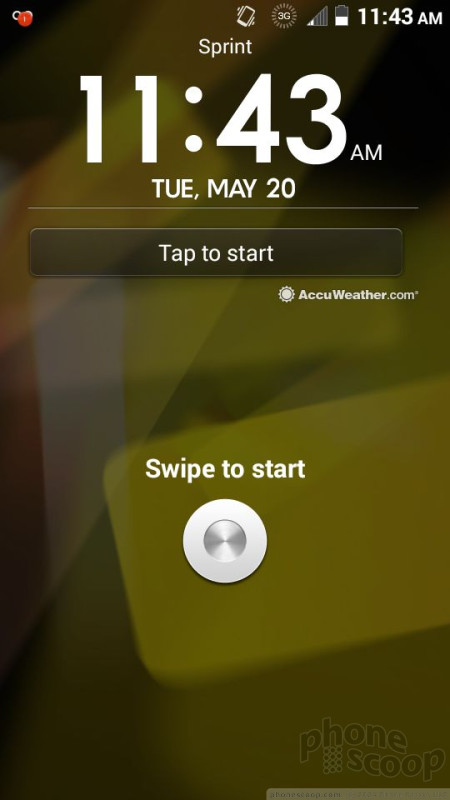








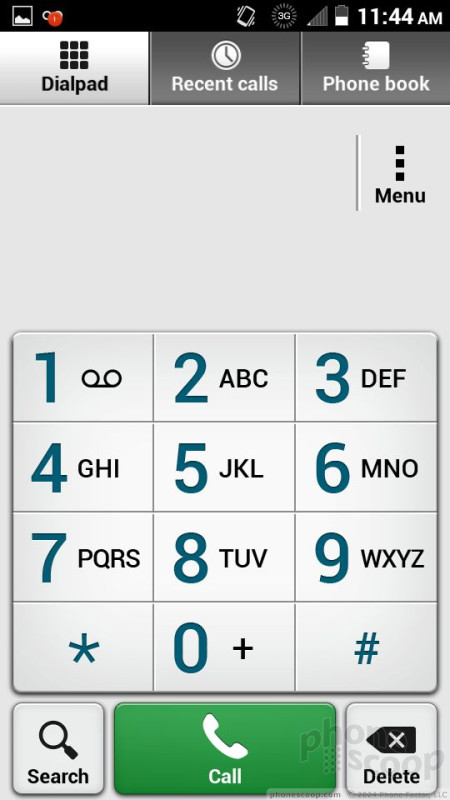



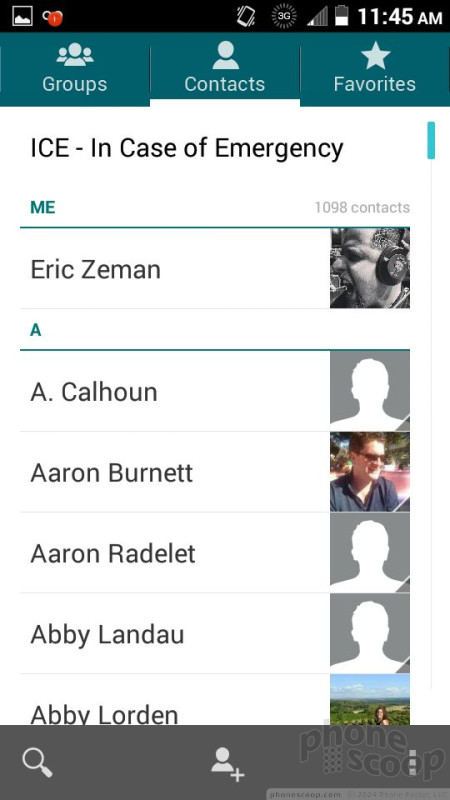



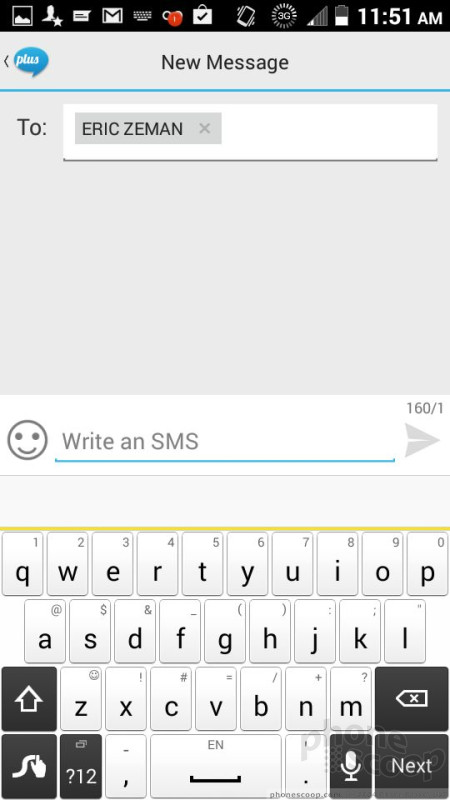






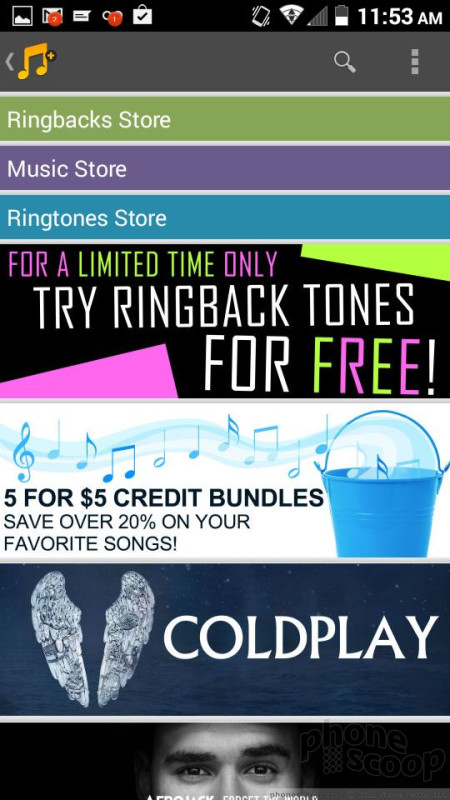






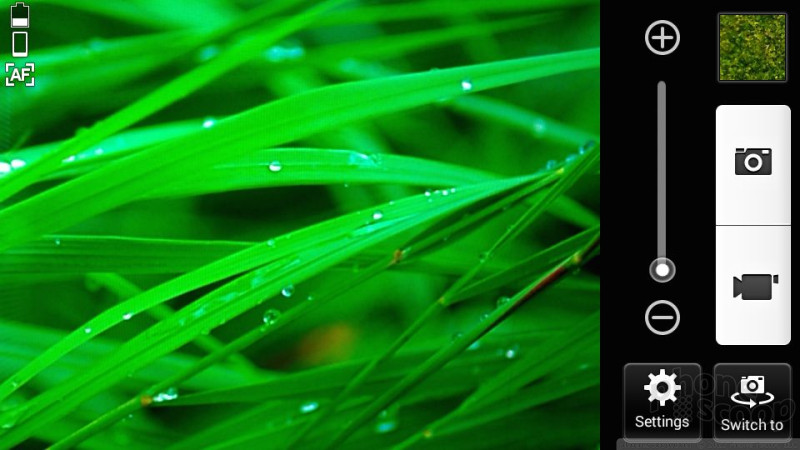


























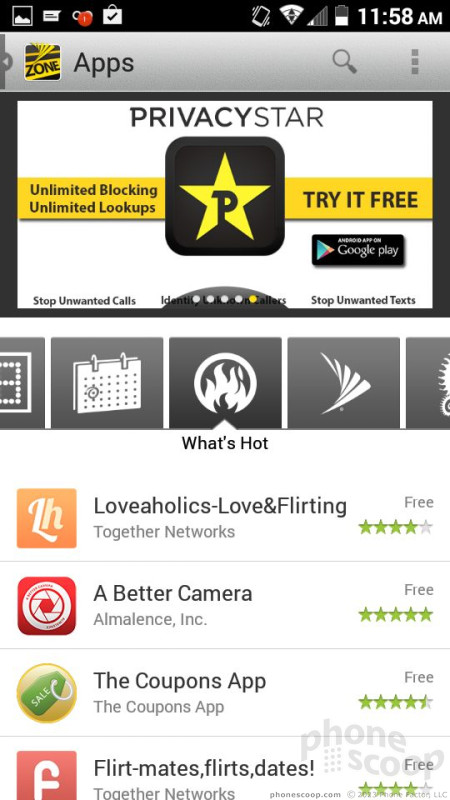







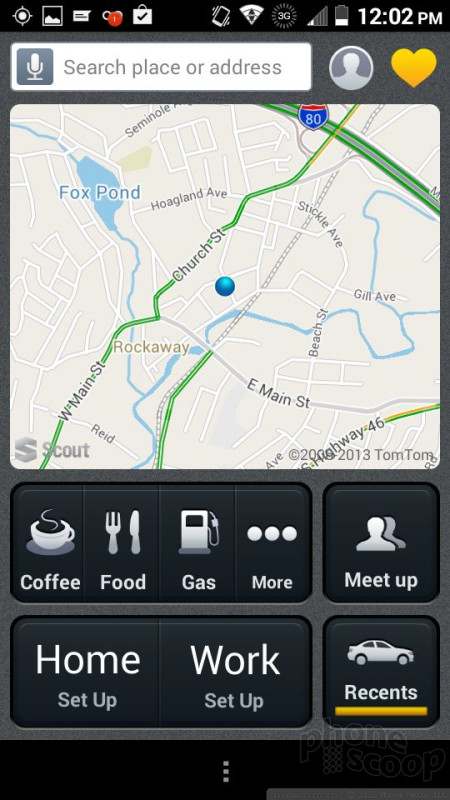





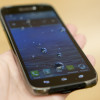 Hands On with the Kyocera Hydro Icon
Hands On with the Kyocera Hydro Icon
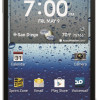 Sprint and Virgin to Sell Kyocera Hydro Vibe
Sprint and Virgin to Sell Kyocera Hydro Vibe
 iPhone 14 Plus Offers a Big Screen For Less
iPhone 14 Plus Offers a Big Screen For Less
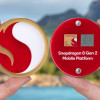 Snapdragon 8 Gen 2 Redefines AI in Flagship Phones
Snapdragon 8 Gen 2 Redefines AI in Flagship Phones
 Kyocera Hydro Vibe / Icon
Kyocera Hydro Vibe / Icon




